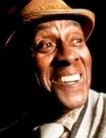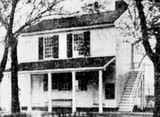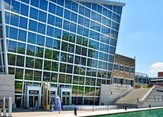
1868 The Reno Gang, led by Scott County brothers Frank, William, John, and Simeon Reno, robbed a train near Marshfield, Indiana, taking approximately $96,000 in treasury notes and bonds. The outlaws had roamed the area in the 1860s, robbing banks and rail cars. The Pinkerton Detective Agency investigated the Marshfield robbery and apprehended Frank Reno. Over the next few months, all members of the gang were captured, and several were lynched by local vigilante groups.
|

1910 Benjamin Sherman Crothers was born in Terre Haute. He adopted the nickname “Scatman” when he broke into show business. He succeeded as an all-around entertainer: actor, composer, singer, comedian, and guitarist. He became s regular guest on the NBC radio show hosted by fellow Hoosier Phil Harris. The two continued to collaborate on records and films for many years.
|

100 Years Ago
1922 The Indiana Chapter of the United States Daughters of 1812 inducted eight new members. They were enrolled as “real daughters,” since their fathers had served in the War of 1812. The organization stated as its purpose the “fostering of increasing knowledge of the history of our country in its preservation of documents and relics, marking historical spots, recording family histories and traditions, and celebrating patriotic anniversaries.” (Pictured: One of the new members was Alma Winston Wilson, daughter of Lazarus Brown Wilson, who fought at the Battle of Fort McHenry, where Francis Scott Key was inspired to write the words to “The Star-Spangled Banner.”)
|

1933 A ceremony was held in Vincennes to celebrate the restoration of the territorial capitol. Known as “territorial hall,” the building served as headquarters for the Indiana Territory, which encompassed Indiana, Illinois, Ohio, Michigan, Wisconsin, and part of Minnesota. The structure included the office of Governor William Henry Harrison. The restoration was performed by a group known as the Vincennes Fortnightly Club. They acted when they heard news that the old capitol was to be torn down. (Pictured: the building as it looked in 1933.)
|

1992 Al Unser, Jr., won the closest Indianapolis 500 race in history, beating Scott Goodyear by 0.043 seconds. The close victory beat the earlier record set in 1982 when Gordon Johncock defeated Rick Mears by 0.16 seconds. Since 1982, there have been three closer finishes, but none have surpassed the record set in 1992.
|

2002 The Indiana State Museum opened in its new location in White River State Park. Built at a cost of $105 million, the museum attracted 5000 people on its first day. They had a chance to view the Hoosier state’s past, present, and future. CEO Doug Noble promised visitors “a surprise at every turn." The museum includes a free “92 County Walk” featuring all Indiana counties with original sculptures incorporated into the building’s facade, sidewalks, and stair railings.
|
Follow this link to subscribe to Hoosier History Highlights and to view archived editions
Follow us on
Instagram: @instatehousetouroffice
|
|